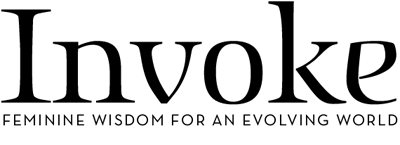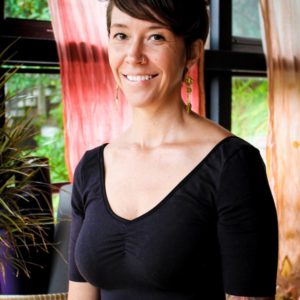In part one of our spring-detoxing series, we tackled the kitchen, looking at what everyday products might be harmful to our health. In part two, we’ll explore the bathroom.
The bathroom is a big one, home to many sprays, soaks, goops, lotions, shampoos, and soaps. Many of these items go directly onto the skin, our largest organ—which absorbs everything we put onto it, for better or worse.
In our home, we began our bathroom detox with our shampoo, conditioner, and body wash—all of which can contain harmful chemicals like sulfates, parabens, DEA, and phthalates, which have been linked to hormone disruption, certain types of cancer, reproductive disorders, skin irritation, and dryness.
Examine your products’ ingredient lists to see if any of these chemicals appear. There are so-called “natural” shampoos and body washes out there that are anything but. When you’re shopping, look for labels that say the product is paraben- and sulfate-free. The Environmental Working Group also offers a handy cheat sheet of chemicals to avoid.
Detox question: What products are in your shower? Which ones can be replaced with plant-based products?
During our own detox, we switched our shampoo and conditioner over to an organic brand found at our local food co-op. I’ve also found that doing an apple cider vinegar rinse following the shampoo works just as well, if not better, than the conventional conditioner I used to use. Simply mix ¼ cup of apple cider vinegar with 16 ounces of water and use it as a rinse on your hair after shampooing; let it sit for a couple of minutes and then rinse it out.
Detox question: What type of soap or body wash do you use? What would it look like if you used less soap or took fewer showers?
New research into the science of skin care and hygiene has yielded interesting results—that using any type of soap too liberally on our bodies is unnecessary and could in fact be harmful to our microbiome, the billions of microbes that inhabit our body and skin and help support life and a healthy body. This research flies in the face of a culture of excessively “clean” bodies, in which many of us shower daily. During our own detox, I stopped using soap of any kind. Gasp! And actually, I have no plans to reintroduce it many months later. For the first time in my life, I haven’t had itchy, dry skin after bathing—even during a Minnesota winter! I know this approach is not for everyone, and it can be modified to suit the individual. If you do want to use soap, choose a natural plant- or lard-based soap. (Dr. Bronner's can be a good one.)
Here’s another alternative practice to washing with soap:
Abhyanga: An Ayurvedic Alternative to Soap in the Shower
This practice comes from Ayurveda, the sister science of yoga. The benefits include greater well-being, increased circulation, removal of impurities, better sleep, and softer and smoother skin. Abhyanga both detoxifies and nourishes the skin, making it a lovely alternative to soap.
You will need:
Organic sesame or coconut oil
Bathrobe
Shower
Before you take a shower, massage yourself head to toe with your preferred organic oil. Put on your bathrobe and wait 10-20 minutes. Take a warm shower, not too hot. You can use soap in “strategic” areas but avoid soaping the whole body. When you get out of the shower, pat your skin gently. Your skin will be warm, nourished, and healthy.
Detox question: What ingredients are in your hand soap?
Hand soap is another important bathroom staple. While hand washing is important in stopping the spread of disease, many brands of hand soap contain harsh and dangerous chemicals like triclosan. An antibacterial agent used in most hand sanitizers, triclosan has been found to increase the rate of antibiotic resistance in bacteria and is linked to liver toxicity, hormone disruption, and impaired heart function. Even scarier: This chemical has been found in nearly 75 percent of Americans tested. You might be surprised to know that it was first registered with the EPA in 1969 as a pesticide! There is no conclusive data to show that it kills bacteria any more effectively than plain old soap and water, so the risk hardly seems worth it. Last year, Minnesota became the first state to ban triclosan, with the ban going into effect on Jan. 1, 2017.
During our detox, we switched to Dr. Bronner’s castile soap, mixing two parts Dr. Bronner’s with one part water into our soap dispenser—easy, healthy, and cost-effective!
Detox question: What’s in your toothpaste?
Nearly all bathrooms contain toothpaste, many of which are colorful, flavorful, and full of chemicals such as sulfates, fluoride, artificial coloring, and even triclosan. During our detox, it was tricky to find toothpaste that tasted good and gave my mouth that minty-fresh feel I was used to. After trying several brands, we settled on a Kiss My Face tooth gel that is fluoride-free and tastes great. I invite you to do your own experiment and find one that you and your family like. Most grocery chains now carry natural brands of toothpaste, like Tom's of Maine or Kiss My Face, that are free from harmful ingredients.
Detox question: How will you dispose of the products you no longer need?
Use caution when disposing of personal care products that contain harmful chemicals. Many cities and towns have resources to help you dispose of unwanted personal care products safely. Just Google hazardous waste collection sites or pollution prevention programs in your area.
Stay tuned! The next article in this series will help you tackle the laundry room.






